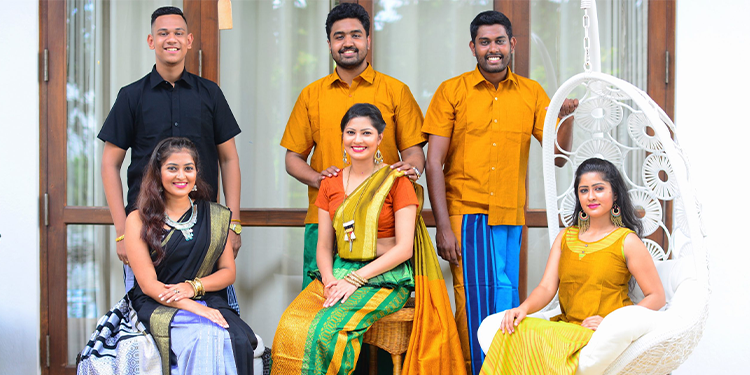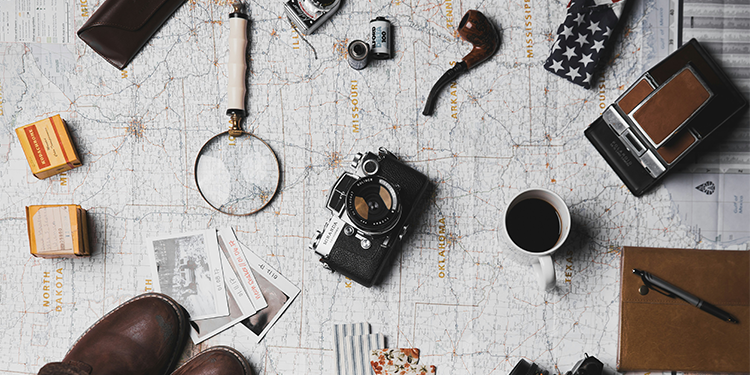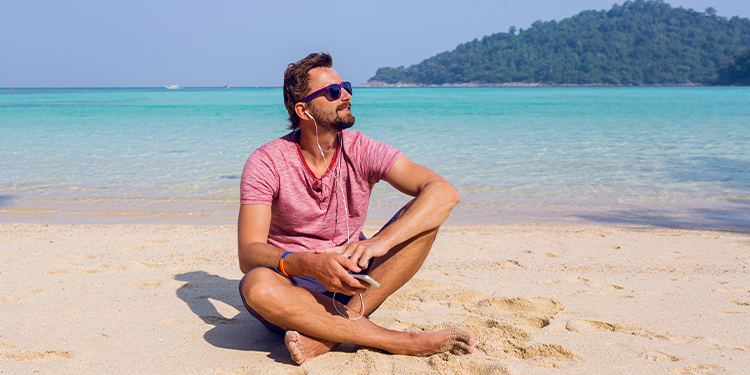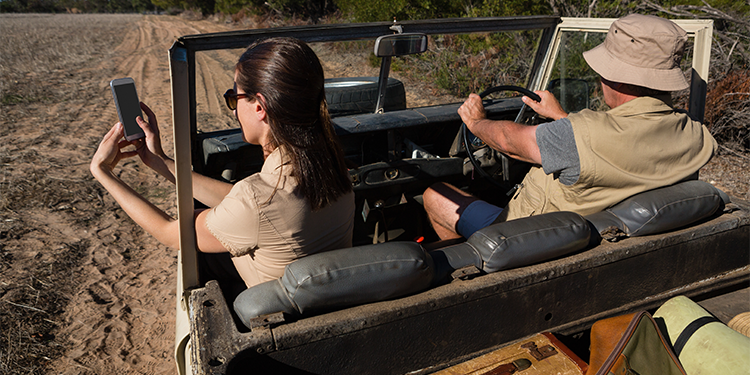Sri Lanka awaits! Pack smart with our guide: beach chic, temple must-haves, mountain layers & city style. Dress like a pro, avoid faux pas, explore freely!
Packing for your trip is the next step after deciding what you want to see and where you want to travel, but it is easier said than done. You may wonder later on whether you are bringing the appropriate clothing and whether there is a dress code you have to adhere to.
The good news is that Sri Lanka’s clothing code is somewhat lenient. However, some garments are more acceptable than others due to restrictions imposed by the local climate and culture.
Firstly, in Sri Lanka, you are more likely to perspire than to freeze. Situated in a tropical climate with an average temperature of 27°C (80.6°F), the island offers breathtaking views.
It goes without saying that when you explore the great outdoors, you will experience the heat. Just limit your clothing selection to summery items to avoid the unpleasant sensation of perspiration-soaked clothing sticking to your skin.
As was previously noted, some clothing items are more acceptable in certain cultures than others.
Ladies, avoid wearing hot pants and low-cut shirts. Instead, limit your wardrobe to cotton or linen blouses, skirts, and pants. Men can also choose to dress comfortably in shorts, pants, shirts, and t-shirts. If you want to visit Sri Lanka and enjoy the best of the country’s culture, think about buying a silk saree or a batik sarong. These colourful traditional clothes are a great way to fit in with the community. They are available in various designs. They’re also excellent as mementos!
Nevertheless, there are a few high-altitude locations in the nation where you can bet on experiencing cold weather, particularly at night. Make sure to pack extra warm clothing in your suitcase if you plan to visit Adam’s Peak, Nuwera Eliya, Hatton, or Ella.
Sri Lanka Dress Code

Due to the conservative nature of Sri Lankan culture, many people there wear modest attire. Men are typically seen wearing t-shirts with sarongs wrapped around their waists, while ladies are frequently seen wearing long skirts and traditional fabrics.
While it is undoubtedly not expected of tourists to dress traditionally in Sri Lanka, understanding what is expected of them can make for a more pleasurable and culturally sensitive travel experience.
Please consider wearing conservative clothing out of respect. Men and women alike should make every effort to cover their knees and shoulders, and ladies should attempt to avoid flashing cleavage.
However, it was impossible to avoid the heat while we were in Sri Lanka. You can wear shorts if you don’t have any lightweight pants on. Just remember to observe the temple’s dress code.
Top Sri Lanka style tips

Due to the conservative nature of Sri Lankan culture, many people there wear modest attire. Men are typically seen wearing t-shirts with sarongs wrapped around their waists, while ladies are frequently seen wearing long skirts and traditional fabrics.
- When planning what to wear in Sri Lanka, remember to pack light. It's quite easy to get clothes laundered.
- Surprisingly, considering the heat, jeans are very popular, especially with younger people.
- Our advice, though, would be to pack lightweight clothes in natural fabrics like cotton, linen, and silk. Particularly if you are used to much cooler temperatures and have to acclimatise. These fabrics will be better in the heat and have the added benefit of washing and drying quickly.
- Light wool is a good choice to wear against your skin, as it naturally helps to regulate your body temperature. It keeps you warm in the cold, wicks away moisture when it's hot, and doesn't retain odours—even after prolonged wear.
- Ensure you bring a versatile travel jacket. We love the SCOTTeVEST travel jacket because it has over 23 pockets, removable sleeves, and RFID protection.
- Light colours work best when reflecting the sun.
- Don't forget your sunscreen (we love the Riemann P20 range for 10-hour protection), sunhat, and sunglasses.
- In Sri Lanka, over 70% of the population is Buddhist, so if you are visiting any of the Buddhist temples, ensure that your body, including your shoulders, is covered. If you are visiting Buddhist and Hindu shrines, then hats and footwear should also be removed.
- Generally, the more conservative your dress, the less unwanted attention you will attract.
- We recommend Thorlos hiking socks; they have options to keep your feet dry and comfortable when trekking in all climates.
- Keep your swimwear just for the beach or pool, and cover up with a sarong or kaftan when walking around. Public nudity—and that includes females being topless—is not only unacceptable but illegal.
Clothing tips for women

- A skirt or loose-fitting pants are good in the heat and will protect you from the sun. Some simple costume jewellery will dress up any outfit if you need it.
- A pashmina or sarong is very versatile—add a bit of ‘glam' to an outfit, cover your shoulder for modesty, or cover up in the sun.
- If you are here on business, then opt for a dress or skirt and blouse, as business suits are hardly ever worn.
Clothing tips for men

- If you're looking for versatile and stylish beachwear, try the Madda Fella range of shirts, shorts, polos, and swimwear. In some temples, men should be prepared to go topless.
- If you are here on business, you will be expected to wear a tie. For great, versatile travel jackets with multiple pockets and RFID security options, we love the SCOTTeVEST range
The climate of Sri Lanka is tropical. Although it's usually hot, it gets even hotter in March and April. The monsoon season in the north occurs in October, November, December, and January. This is the time of year when a lightweight raincoat and a travel umbrella come in handy. It could be a good idea to bring a heavier jacket or sweater if you intend to travel into the hilly region because the temperature does tend to decrease there. It's a nice season to visit the north, but be prepared for rain in the southwest in May, June, July, August, and September.

Sri Lankan temple dress code

It should come as no surprise that some of Sri Lanka’s most visited tourist spots are religious sites, given the country’s rich cultural heritage. However, you have to adhere to the Sri Lankan temple dress code whether you are paying your respects to the Sri Dalada Maligawa (also called the Temple of the Sacred Tooth Relic) or you are just stopping by a tiny temple.
In brief, only skirts and shorts below the knee are permitted in these places of worship, and everyone is required to cover their arms up to their elbows.
I would suggest carrying a light shirt and a sarong at all times. After all, you may easily wear them over your clothes to avoid having to visit the temple on a different day, and you never know when they will come in handy. It’s an easy fix for situations where your clothing is too short to enter.
Before entering a temple, visitors are also asked to remove their shoes and headgear. These must be left at the door, as requested.
When visiting a religious location, wearing white clothing will get you the respect of the people; however, it is by no means required.
Additionally, it is required for both sexes to cover their knees and shoulders when entering a Buddhist or Hindu temple. You can borrow sarongs from some temples, but not all of them.
In addition, shoes and caps must be taken off before entering a temple. When entering someone’s home, shoes must also be taken off. Additionally, it’s crucial that you avoid wearing any clothing that features images of Buddha or any other deity, for that matter, as this will offend people.
What locals wear in Sri Lanka

Light, breathable, and comfortable to wear are the preferred textiles for the typical Sri Lankan. But a lot of them are used to the heat, so they don’t mind dressing warmly and donning long-sleeve shirts.
You will see many ladies wearing sarees on your travels; these women are generally office workers and school teachers, so wearing one won’t make you feel uncomfortable. To beat the heat, ladies typically choose to dress casually by pairing skirts or trousers with tees and short-sleeved shirts.
The average salaryman wears pants with his shirt. However, there are lots of other men who are dressed in shorts, jeans, and t-shirts. Most locals, as you may have already surmised, prefer comfort to style, and this is particularly true on sunny days. Nevertheless, Sri Lanka’s dress code is probably similar to your country’s casual wear.
If stated differently, you’ll actually find that blending in is not that difficult!
Travel essentials for Sri Lanka

In addition to organising your Sri Lankan wardrobe, it’s a good idea to make a list of the essential travel accessories you should bring. When travelling across the nation, a backpack or soft-sided rucksack is a more sensible choice than a hard case. Packing cubes can also help keep your items organised while reducing space. Pair your primary bag with a small, light backpack or beach bag to hold your daily necessities.
If your electrical devices are not made for the local voltage (230V), you may need to use a step-down voltage converter in addition to a travel adaptor plug in order to use them.
Make sure you stay inside the weight limit by using an accurate luggage scale to avoid paying unforeseen baggage costs. On the trip home, don’t forget to allow space for keepsakes! Batiks and carved wooden elephants are popular purchases. Don’t forget to exchange any leftover currency before you depart the nation.
If stated differently, you’ll actually find that blending in is not that difficult!
What to Wear in Sri Lankan Cities?

You should wear appropriate clothing when visiting Sri Lankan cities, particularly Colombo and Galle, not only for cultural reasons but also to protect yourself from the sun.
Wearing a long, thin skirt or a pair of pants that fall to the knees will be ideal for touring this nation because they will keep you somewhat cool and prevent you from feeling overly exposed.
After that, I would suggest covering your shoulders and chest with a thin scarf or a T-shirt for the upper portion of your body. Generally, you should dress comfortably and coolly because sightseeing in Sri Lanka’s hot and muggy weather requires you to be both.
Sunglasses, a decent sunhat, and some sunscreen are also essentials, and I strongly advise packing a decent daypack that you can fit everything in and use with ease when exploring Sri Lanka’s cities.
Because it is lightweight, comfortable, waterproof, and packs down to almost nothing, the Marmot Kompressor is perfect for the task. Lastly, you should make sure you bring water with you and drink a lot to stay hydrated during your days of sightseeing in this nation.
I strongly advise you to bring a filter water bottle to Sri Lanka so you can safely drink the tap water here (or anywhere on the globe) instead of continuously purchasing plastic water bottles.
I find the Water-To-Go bottles to be an incredible piece of technology. You may safely drink tap water everywhere on the globe with these amazing bottles, which are also great for the environment and your pocketbook.
What to Wear at the Beach in Sri Lanka?

When visiting Sri Lanka’s beaches in the south or east, you’ll discover that the dress standards there are more lenient than in the country’s cities. For this reason, I always believe that one of these coastal places would be a great place to end your journey in Sri Lanka and relax for a few days prior to your departure.
You should definitely pack a towel and swimsuit to enjoy these locations, which have lovely sandy beaches and warm weather. To keep items safe and free of sand and water at the beach, sarongs, sunglasses, sun hats, sunscreen, and dry bags are also smart ideas. Remember to bring along your Bluetooth headphones and a nice book!
What to Wear at the Beach in Sri Lanka?

Light-colored, thin clothing is essential when preparing for a safari in Sri Lanka. Even though going on safari in Sri Lanka can get quite warm, wearing longer-length clothing, like loose linen pants and cotton shirts, will help shield your skin from the harsh sun rays.
Well-fitting clothing can be removed in favor of shorter layers during the hottest part of the day, and it is also more suitable for exploring the countryside and seeing wildlife. Remember to wear a sunhat and sunglasses as well. Some parks allow you to go on dawn or dusk safaris, and because you’ll probably be traveling in an open-sided vehicle, you might want to pack a light jacket and covered-toe shoes.
Clothes to Pack for Sri Lanka
- Thin Windproof Jacket:Because of its tropical climate, rain is a possibility in Sri Lanka. Therefore, I advise you to bring a lightweight, portable, and useful windproof jacket when visiting this nation. The North Face Venture 2 is an excellent choice.
- Thin Denim Shirts or Cotton Long-Sleeved Tops are Ideal for layering, certain light, thin tops are essential because you might not feel comfortable going around with bare upper arms in some regions of the country.
- Thin cardigans or sweaters are helpful in the evenings in the Highlands, where it can be cooler.
- Singlets and T-Shirts:Pick a variety of hues and designs that go with the skirts, shorts, and pants you are packing. suggest airy ones that won't overexpose you and will keep you cool. The greatest piece of clothing is a t-shirt, since it protects your shoulders from sunburn. Alternatively, try my ventilation strategy of wearing a singlet with a thin scarf wrapped around your chest and shoulders. You will be sweating in Sri Lanka, so seven tops is a reasonable number to have so you can get by for a week without doing laundry!
- Thin Linen or Cotton Trousers:Perfect for evening outings and the milder environment of the tea plantations. Just be sure they're light and thin because, in this humidity, breathability is crucial!
- Long Skirts or 3/4-Length Loose Trousers:These clothes are great for wearing while exploring or in cities because they aid in ventilation, keeping you cool but protected. These are ideal because you'll need to make sure you have clothing that covers your knees when visiting temples
- Leggings:If you choose the correct pair, leggings can be very comfortable in Sri Lanka's tea highlands because they are lightweight and breathable. Bamboo fiber ones are actually highly recommended because they are hypoallergenic, breathable, soft, thin, and readily compress down. When you need to dress modestly, leggings look great beneath casual dresses and are comfortable for any lengthy bus excursions you may have to take.
- Shorts:In Sri Lanka, shorts are a necessity, particularly in the coastal regions.
- Summery/Maxi Dress:One more fantastic thing for beach days in Sri Lanka. Those who don't like dresses would want to wear more shorts in this instance.
- Activewear:Physical leggings or shorts, sports bras, loose singlets, a cap, and quality socks are essential if you plan to partake in any physical experiences while visiting Sri Lanka, such as boat rides or trekking routes like the Pekoe Trail or Sigiriya Rock. In case you're travelling to Sri Lanka for this as well, don't forget your equipment for kitesurfing or surfing!
- Sarongs:I feel that you can never bring enough sarongs when you travel. I would suggest at least two, because they are quite light! Perfect for visiting temples, it can be used as a beach towel, headscarf, shoulder wrap, bathrobe, sheet, laundry bag, etc. Thin scarves are perfect if you need to cover your head at any mosques or temples you visit. Also useful for covering shoulders; for further information, check the T-Shirt/Singleton section above.
- Underwear:Seven pairs is a good quantity to save hand washing tasks because they are small and compact!
- Bras & Sports Bra:Make them comfortable ones in this heat!
- Bikini / Swimwear:You definitely need something to appreciate the amazing seashore of Sri Lanka with!
- Socks:In Sri Lanka, you'll likely wear sandals the majority of the time. However, on the rare occasions when you'll wear trainers—such as on bus or airplane travel, on an active adventure, or at night in the highlands—socks are a requirement.
- Light Nightwear:If necessary, you may always double up on your daywear here to conserve space.The nights in Sri Lanka are hot and muggy, so be advised!
- Sun Hat & Sunglasses:Walking all day in Sri Lanka's heat might be exhausting, so I'd pack a cap for the beach and any active days!
- Sunglasses and a hat with a wide brim are also smart choices
FAQs
While most regions of the country prohibit revealing clothing, there are beaches in Sri Lanka that are popular with tourists, including Bentota, Mirissa, Unawatuna, Hikkaduwa, Trincomalee, and Pasikuda, where you are allowed to wear a bikini.
On the other hand, it is recommended that you wear shorts and a tank top if you are visiting a beach that is less popular with tourists. By doing this, you’ll avoid drawing any unwanted attention to yourself.
Wearing a sarong beforehand is enough if your plan involves visiting a nearby beach café, turtle hatchery, or other site.
The majority of five-star hotels primarily serve tourists. At these hotels, wearing a bikini is very acceptable when lounging by the pools or just taking in the sun.
Yes, you can. When preparing for your trip, always remember to avoid hotpants, even if the locals wear them to beat the heat. Ultimately, modesty is highly valued by Sri Lankans, and hotpants expose too much skin to be considered socially acceptable.
Yes. There is just one occasion when this does not apply: when you are at a temple. As previously stated, when you enter a place of worship, you are required to cover your arms up to your elbows.Feel free to stroll around, baring your shoulders, if visiting a temple is not on your schedule!
Evening clothing: It’s best to pack one set because star hotels require males to wear “long attire” (neither shorts nor sandals) for dinner. Ladies may wear long shorts, dresses, or skirts, but no swimsuits or beachwear.
When in places of worship, dress modestly. Ladies should dress modestly in loose pants, dresses, or long skirts and blouses. Long pants are appropriate for men. Historic temples are revered sites that ought to be handled as such. When entering a Buddhist or Hindu temple, take off your shoes and remove your hat. If you are carrying an umbrella, unfold it as well. Never visit a temple or other place of worship wearing beachwear, such as shorts or a singlet; instead, cover your shoulders and legs.
Nudity is absolutely not allowed anywhere. At the beach, too, this applies. It’s also forbidden to sunbathe without a top.




Comment (0)